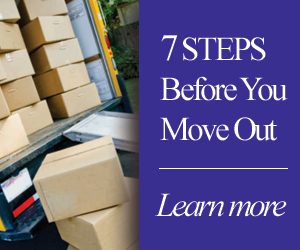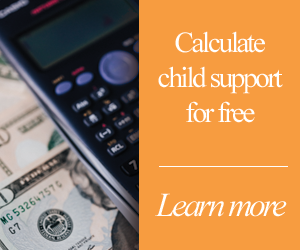Domestic violence. Behind closed doors it secretly bruises the lives of nearly four million wives and children, relatives and friends each year. We’ve all seen the statistics: an estimated 44 million women in the United States are battered each year by their partners, and 1 in 10 men will have experienced sexual violence, physical violence, and/or stalking by an intimate partner during their lifetime.
Studies show that violence occurs at least once in two-thirds of all marriages. Approximately 95% of the victims of domestic violence are women, and roughly 40% of all physically abused children have also witnessed interspousal physical violence.
Finally, many children who are abused, or who witness abuse of their mothers or fathers, grow up to become abusive themselves or become victims of domestic violence again. And the circle continues.
Fortunately, North Carolina has special laws that provide quick and effective relief for domestic violence. These laws specify who can obtain a domestic violence protective order, the acts they protect, how to obtain them, how long they last, and the punishments for violating these laws.
What is Domestic Violence?
In order to obtain a domestic violence protective order (“DVPO”), something must have happened that qualifies as an act of domestic violence.
North Carolina defines domestic violence to be at least one act against an aggrieved person, or a minor child living with that person, committed by a second person when those two people have had or do have a personal relationship. An act of domestic violence can be:
- Intentionally causing or attempting to cause bodily injury;
- Making the aggrieved person or a member of their family or household be in fear of imminent serious bodily injury;
- Making the aggrieved person or a member of their family or household be in fear of continued harassment which inflicts substantial emotional distress; or
- The commission of rape or other criminal sex offense.
Specifically excluded from the definition of an act of domestic violence is an act in self-defense.
So if you are applying for a DVPO, you only need to show one of the four acts of domestic violence. And that one act needs to have happened to you only one time.
What Qualifies as a “Personal Relationship?”
In addition to you, as an aggrieved person, showing an act of domestic violence as defined by the law has occurred, you must also show that you and the aggressor have had or do have a personal relationship.
A personal relationship is:
- Current or former spouses;
- Two people of the opposite sex who live together or used to live together;
- Parents and children, or grandparents and grandchildren;
- Two people who have a child or children together;
- Current or former household members; or
- Two people of the opposite sex who are currently or were formerly in a dating relationship.
If you can identify with at least one of the definitions of a personal relationship, plus show at least one act of domestic violence happened, you will qualify for a DVPO.
What Can a Domestic Violence Protective Order Do for Me?
The general conception about DVPOs is that they prohibit an aggressor from contacting a victim of domestic violence. But DVPOs offer other forms of relief for victims than just this.
Other forms of relief include:
- Prohibiting the aggressor from showing up at the victim’s home, workplace, and/or school;
- Prohibiting the aggressor from showing up at the parties’ children’s school and/or daycare;
- Prohibiting the aggressor from contacting children in the care of the victim;
- Prohibiting the aggressor from threatening the victim’s family or household members;
- Prohibiting the aggressor from abusing the parties’ animals or pets;
- Granting the victim possession of the parties’ animals or pets;
- Granting the victim possession of the parties’ residence and evicting the aggressor;
- Granting the victim possession of the parties’ car;
- Requiring the aggressor to pay the victim temporary child support;
- Prohibiting the aggressor from possessing or purchasing a gun;
- Requiring the aggressor to surrender all firearms, ammunition and gun permits; and
- Requiring the aggressor to attend a treatment program.
This is not an exhaustive list of relief. A judge may order a combination of these forms or relief, or may add additional ones.
Can I Get Custody of My Children through a Domestic Violence Protective Order?
A victim of domestic violence can be awarded temporary custody of the parties’ children through a DVPO. This can be particularly helpful when there is danger to a victim and the children.
However, you should not rely on a DVPO to obtain permanent custody or to initiate a custody proceeding. A domestic violence action does not provide the requisite allegations to establish a solid claim for custody. This is true for child support and alimony claims as well.
If you need a DVPO, and child custody, child support, and/or alimony are also at issue, you should file two separate complains. The first is the DVPO. The second complaint should be custom-tailored to the sorts of relief you are asking for.
Ensure Your Safety
If you feel like you’re a victim of domestic violence, you know you need to do something to protect yourself. Most importantly, you need to have the courage to make those first steps.
Depending on your situation, those first steps may be to leave the house, file for a DVPO, talk with a lawyer, or combination of these.
You need to get yourself to a safe place first, and this includes calling law enforcement to help you. Once you’re somewhere safe, call your local domestic violence center. These centers have lots of resources and people handy to help you out.
You may find that you need to leave the house in order to reach a safe place. And you will probably want to take the children with you to keep them safe as well. Just be mindful that leaving without a good legal reason can affect alimony and can prolong your ability to retrieve property from within the house. And be sure not to violate any existing court orders by taking the children with you if you need to leave the house.
If at all possible, try to meet with a lawyer prior to leaving the home to be sure all of your rights are protected.
Once you’re safe, whether that’s at home or elsewhere, then you can begin the process of filing for a DVPO and/or meeting with a lawyer to help you file.
How Do I Obtain a Domestic Violence Protective Order?
Now that you’ve determined you will likely qualify for a DVPO, you need to actually obtain the order. If you’ve never dealt with the court system before, or even if you have, filing motions and obtaining orders can seem like a daunting task.
Fortunately, North Carolina provides a pre-printed form for the Complaint and Motion for Domestic Violence Protective Order. This is one form and it is available on the North Carolina Courts website, as well as in each county’s Clerk of Superior Court’s office.
With the pre-printed form, you check the applicable boxes and fill in the specifics of your situation. You don’t have to create your own forms, although if you hire a lawyer to file the paperwork for you, your lawyer may or may not use their own.
Be specific and clear as you fill in the form. List all the facts, not just the result of the violence. You want the judge that will be reviewing your Complaint and Motion to clearly see the act or acts of domestic violence that happened to you.
You will also need to check applicable boxes related to what you think the appropriate relief is. This is your chance to let the judge that will be reviewing your Complaint and Motion know what you need from the courts to feel safe. This may include you asking for temporary possession of the marital residence and/or temporary custody of the children, and that your spouse stay away from your work and/or your children’s daycare, that your spouse attend a treatment program, and other remedies.
I’ve Filled Out the Forms, Now What?
Now that you’ve filled out the Complaint and Motion for a DVPO, you’ll need to file them at the courthouse.
Take your completed Complaint and Motion to your county’s Clerk of Superior Court’s office inside the courthouse. These will be filed when you arrived. Each county has their own procedure for submitting the Complaint and Motion to a district court judge (in some counties the Complaint and Motion will be reviewed by a magistrate). You may or may not be directed to a courtroom, and you may or may not speak to the judge.
Once the judge has reviewed your paperwork, he or she or will issue an Ex Parte Domestic Violence Order of Protection if he or she believes you’ve met the qualifications. If the judge does not believe you have shown enough information to meet the qualifications, he or she will deny your Complaint and Motion.
An ex parte order is an order that is entered by the Court when only one party has appeared and presented their side. Ex parte orders are entered in emergency situations, such as when domestic violence is involved, and are temporary in nature.
I Have an Ex Parte Domestic Violence Protective Order – Am I Done?
Once the judge grants your request for a DVPO and issues an Ex Parte Domestic Violence Order of Protection, you will automatically be given a court date to return. This court date will be within ten days of the date the judge issued the ex parte order.
Bur first, the person you have the DVPO against (called the defendant) must be properly served with the Complaint and Motion and the ex parte temporary order. The Clerk of Superior Court’s office will transfer these documents to that county’s Sheriff’s Office for a deputy to serve the defendant at the address you provided.
Serving the defendant by sheriff’s deputy gives that person actual notice of the ex parte order against them and that they can no longer contact you in any way.
The Court Date – What Evidence Do I Need?
Within ten days of the judge issuing the ex parte order, you will have to return to court.
The purpose of this court date is to have a hearing on the issues at hand. The judge will need to hear from both parties. It will be your chance to more fully and completely present your case, and it will be the defendant’s chance to be heard about the allegations against them.
This court date will likely require you to testify. Again, you will want to be as specific and clear as possible so the judge can thoroughly understand what happened. Your testimony should emphasize the fear you experienced but without lapsing into exaggeration.
You can use medical reports, photographs, other physical evidence, and the judge’s own examination of your injuries to supplement your testimony. It is helpful and effective if your evidence is well-organized. Highlight important facts and show the judge your evidence in a manner that is easy to read or observe.
Overall, make sure that all of your evidence supports your claim of an act or acts domestic violence against you.
The Permanent Order is Not Actually Permanent – Can I Get it Renewed?
After you’ve received an ex parte DVPO and have a hearing in court, the judge will either grant or deny your request for a permanent DVPO.
If you are granted a permanent DVPO, know that it is not actually permanent. A DVPO only lasts for one year from the date it is granted (the court date). There are no exceptions for a longer period of time. The first page of your DVPO will tell you the exact date your DVPO expires.
However, prior to the one-year expiration date, you can request to have the DVPO renewed.
In order to start the renewal process, you must first file a Motion to Renew DVPO. This is also a pre-printed form available on the North Carolina Courts website and in each county’s Clerk of Superior Court’s office. Again, be specific and clear about the facts supporting your request for renewal.
You must attend a court date in which you will again testify and explain your reasons for renewal. A judge will renew a DVPO for good cause. If the judge grants your motion, the DVPO will be renewed for up to two additional years.
It is important to make sure you file the Motion to Renew Domestic Violence Protective Order before the DVPO expires, otherwise it cannot be renewed.
What Happens if There is a Violation?
If you suspect the aggressor has violated the DVPO against him or her, you should first call 911.
Depending on your specific DVPO, a violation could be the aggressor showing up at your work, threatening you, calling you, or otherwise contacting you or your children.
Keep in mind a DVPO prohibits direct and indirect contact with you. Direct contact is a phone call, text message, or other communication directly to you. Indirect contact is when the aggressor has someone else call you or communicate with you on behalf of the aggressor.
Generally, knowingly violating a valid DVPO or ex-parte DVPO is a Class A1 misdemeanor crime. This is the most serious class of misdemeanors and can be punishable by up to 150 days in jail. The law provides for more serious violations and for repeated violations to be punishable as felonies.
Also available for violations of a DVPO is seeking to hold the aggressor in contempt of the court order. You can start this process by filing a Motion for Order to Show Cause for Domestic Violence Protective Order. This is also a pre-printed form available on the North Carolina Courts website and at every county’s Clerk of Superior Court’s office. Contempt is punishable by fines and/or jail time.
Where to Turn for Help
If you believe you are a victim of domestic violence, or to learn more information about domestic violence, visit the following links:
- Address Confidentiality Program for Domestic Violence Victims in North Carolina
- Domestic Violence & Sexual Assault State-Funded Programs
- Family Violence Prevention Fund
- Interact of Wake County
- North Carolina Coalition Against Domestic Violence (NCCADV)
- North Carolina Council for Women and Domestic Violence Commission
- New Social Security Numbers For Domestic Violence Victims







